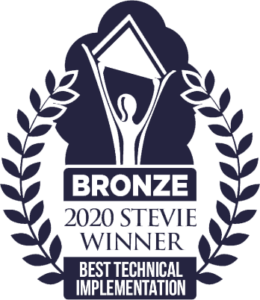This month's author: Gareth Nagle, Business Development Manager at Assured Thought
In this month's blog, Gareth Nagle, Business Development Manager at Assured Thought, draws on his extensive experience to provide a comprehensive, step-by-step guide to implementing wealth management software.
Emphasising the importance of careful planning and execution, this guide covers critical areas such as project planning and stakeholder alignment, as well as outlining the vital role of testing at every stage. The actionable advice it gives will help ensure your firm’s specialised software implementation process runs smoothly, so you can avoid disruptions and achieve significant benefits.
- Understanding the importance of wealth management software
Before diving into the implementation process, it’s essential to understand the significance of wealth management software in today’s financial sector. These platforms are designed to automate routine tasks, streamline operations, enhance client interactions and provide in-depth analytics. They integrate various functions such as portfolio management, client relationship management (CRM), financial planning and reporting into a cohesive system.
The right software can significantly improve decision making by providing real-time data and insights, thus enabling advisors to offer personalised advice and services. Furthermore, it will ensure compliance with regulatory requirements, reducing the risk of errors and penalties. Therefore, the success of the implementation process is directly linked to the overall efficiency and success of the wealth management firm.
- Project planning: Laying the foundation
The first – and arguably most critical – step in implementing wealth management software is thorough project planning. A well-structured plan sets the stage for a successful implementation by defining objectives, scope, timelines and resources.
a) Define clear objectives
Begin by identifying the specific goals you want to achieve with your new software. These could include improving client satisfaction, increasing operational efficiency, enhancing data accuracy or ensuring regulatory compliance. Clear objectives will provide direction and help you measure the success of your implementation process.
b) Establish a realistic timeline
Setting a realistic timeline is crucial to avoid rushing implementation, which can lead to errors and omissions. Split the project into phases, such as planning, customisation, testing, training and go-live. Assign deadlines to each phase, keeping in mind the complexity of the tasks involved.
c) Budgeting and resource allocation
Determine the budget for the project, including software costs, hardware upgrades, consultancy fees and training expenses. Ensure adequate resources, both financial and human, are allocated to the project. It’s also wise to have a contingency fund to cover unexpected expenses.
d) Risk management planning
Identify potential risks that could derail the project, such as technical challenges, resistance to change or vendor issues. Develop a risk management plan that outlines strategies to mitigate these risks. Regularly review and update the plan as the project progresses.
- Stakeholder alignment: Ensuring everyone is on the same page
Successful implementation of wealth management software requires the alignment of all stakeholders, including management, IT teams, financial advisors and clients. Stakeholder alignment ensures everyone understands the project’s goals, their roles in the project and the benefits of the new system.
a) Engage key stakeholders earlyInvolve key stakeholders from the beginning of your project to gain their support and insights. Be sure to include senior management, who can provide strategic direction and secure funding, as well as end users who can offer practical input on the software’s functionality.
b) Clear communication channelsEstablish clear communication channels to keep all stakeholders informed throughout your project. Regular updates, meetings and reports help in maintaining transparency and addressing concerns promptly. Use tools like project management software to track progress and share updates.
c) Addressing resistance to changeChange management is a critical aspect of software implementation. Some employees may resist the new system due to fear of the unknown or concerns about increased workload. Address these concerns through regular communication and training that highlights the benefits of the new software.
d) Client communicationClients are a vital part of the wealth management process, and their experience should not be disrupted during the implementation. Communicate with clients about the upcoming changes and how they will benefit from them, and assure them their data and services will remain secure throughout the process.
- Customisation and integration: Tailoring the software to your needs
Wealth management software often comes with a wide range of features and capabilities. However, it’s unlikely an out-of-the-box solution will perfectly match your firm’s specific needs. Customisation and integration are therefore crucial steps in the implementation process.
a) Identifying customisation needsWork closely with the software vendor to identify areas where customisation is necessary. This could involve modifying workflows, creating custom reports or integrating the software with existing systems such as CRM or accounting software. Ensure any customisation aligns with your firm’s objectives and regulatory requirements.
b) Seamless integration with existing systems
Integration with existing systems is often a complex task that requires careful planning and execution. Ensure your new software can communicate effectively with other tools and platforms your firm uses. This may involve data migration, API development or setting up data feeds. Proper integration is crucial to avoid data silos and ensure a unified system.
c) Vendor support and collaboration
Collaboration with the software vendor is essential during customisation and integration. Choose a vendor that offers strong support services, including access to technical experts who can assist with complex customisation and integration tasks. Regular communication with the vendor will help you resolve issues promptly and ensure the software meets your firm’s needs.
- The critical role of testing: Ensuring everything works as expected
Testing is one of the most critical stages in the implementation process. It ensures software functions correctly, integrates smoothly with existing systems and meets your firm’s requirements. Skipping or rushing through testing can lead to significant issues after implementation, which can be costly and disruptive.
a) Types of testing
To ensure a smooth implementation, you’ll need:
– Unit testing: Focuses on individual software components to ensure they function correctly.
– Integration testing: Ensures software integrates seamlessly with other systems.
– User acceptance testing (UAT): Involves end users testing software to ensure it meets their needs and expectations.
– Performance testing: Assesses software performance under various conditions, such as high data loads or multiple users.
– Security testing: Ensures software meets all security requirements and that client data is protected.
b) Involving end users in testingInvolving end users in your testing process will be crucial for ensuring the software meets their needs and has no usability issues. Encourage feedback from users during UAT and make necessary adjustments based on their input.
c) Developing a testing plan
A detailed testing plan should be developed, outlining the types of tests to be conducted, the timeline and the criteria for success. Ensure testing is thorough and all potential issues are identified and addressed before you move to the next stage.
d) Continuous testing and quality engineering
Testing should not be a one-time activity but a continuous process throughout implementation. Regular testing and quality engineering (QE) checks will help you identify issues early and prevent them from escalating. Implement automated testing tools where possible to streamline the process and improve accuracy.
- Training and change management: Preparing your team for success
Once your chosen software has been customised, integrated and tested, the next critical step is to ensure your team is ready to use it effectively. Proper training and change management are essential to maximise the benefits of your new software.
a) Developing a training programme
A comprehensive training programme should be developed to ensure all users are comfortable with the new system. The programme should cover all aspects of the software, including basic operations, advanced features and troubleshooting. Consider using a mix of training methods – such as hands-on workshops, online tutorials and user manuals – to cater to different learning styles.
b) Role-based training
Users will have different needs based on their roles. For instance, financial advisors might need training on client relationship management features, while IT staff may require training on software maintenance and support. Tailor the training programme to address the specific needs of different user groups.
c) Ongoing support and resources
Training should not end once software goes live. Make sure you provide ongoing support and resources to help users as they begin working with the new system. This could include a helpdesk, an online knowledge base and regular refresher training sessions.
d) Managing the human side of change
Software implementation often involves significant changes in workflows and processes. Managing the human side of change is crucial for a smooth transition. Communicate the benefits of the new system, address concerns and provide support to help employees adapt to changes.
- Go-live and post-implementation: The phases of truth
Go-live is the phase in which software is officially rolled out and begins to be used in day-to-day operations. This is a critical stage in which all the planning, testing and training come together. A successful go-live requires careful preparation and monitoring.
a) Final preparations
Before your go-live date, ensure all preparations are complete. Be sure to finalise data migration, confirm all integrations are working correctly and conduct a final round of testing. Develop a go-live checklist to ensure nothing is overlooked.
b) Go-live support
Provide extensive support during the go-live phase to quickly address any issues that arise. This could include having the vendor’s technical team on standby, setting up a dedicated support team and closely monitoring the system’s performance.
c) Monitoring and early troubleshooting
During the initial days and weeks after go-live, closely monitor the system for any issues. Early identification and resolution of problems are crucial to minimising disruptions. Use monitoring tools to track system performance, user activity and data accuracy.
d) Gathering feedbackCollect feedback from users during the post-implementation phase to identify any issues or areas for improvement. Regular feedback sessions and surveys can provide valuable insights into how software is performing in real-world conditions to help you make any necessary adjustments.
- Continuous improvement: Refining the system over time
The implementation of wealth management software is not a one-time event but an ongoing process of improvement. Continuous refinement and updates will be necessary to ensure your software remains effective and aligned with your firm’s evolving needs.
a) Regular updates and maintenance
Ensure software is regularly updated to incorporate new features, security patches and regulatory changes. Work with the vendor to stay informed about upcoming updates and plan for their implementation.
b) Performance monitoring and optimisation
Continuously monitor the software’s performance and make necessary adjustments to optimise its operation. This could involve tweaking workflows, improving data integration or upgrading hardware to enhance system speed and reliability.
c) Ongoing training and developmentAs your chosen software evolves, ongoing training will be essential to ensure its users remain proficient. Regular training sessions and access to updated resources can help users take full advantage of new features and capabilities.
d) Strategic reviewsPeriodically review software performance in relation to your firm’s strategic goals. Assess whether the system is delivering the expected benefits and identify any areas for improvement. Use these reviews to make informed decisions about future upgrades or changes.
- The critical role of quality engineering in preventing issues
Throughout the implementation process, quality engineering (QE) will play a vital role in ensuring your choice of software meets the required standards and functions as expected. QE should be an integral part of every stage of the project, from planning to post implementation.
a) Establishing QE standards
Develop QE standards that outline the criteria for software performance, security, usability and compliance. These standards should be based on industry best practices and tailored to the specific needs of your firm.
b) Continuous QE involvementQE should be involved in every stage of your software implementation process. It should be leveraged in reviewing the project plan, testing customised features, overseeing integration and conducting final checks before go-live. Continuous QE involvement ensures issues are identified and addressed early, reducing the risk of major problems.
c) Automated QE toolsLeverage automated QE tools to enhance the efficiency and accuracy of your testing. Automated testing can quickly identify issues that might be missed during manual testing, particularly in complex systems with multiple integrations.
d) Post-implementation QEQE doesn’t end with go-live. Post-implementation QE involves monitoring software performance, conducting regular audits and addressing any issues that arise. This ongoing QE process will ensure your chosen software continues to meet your firm’s needs and delivers consistent value.
- Achieving a successful implementation
Implementing wealth management software is a complex but rewarding process that requires careful planning, collaboration and attention to detail. By following this comprehensive guide, your wealth management firm can navigate the challenges of implementation and achieve a smooth transition to a new system, enhancing efficiency, improving client experiences and supporting long-term growth.
From the initial planning stages to post-implementation monitoring, every step is crucial in ensuring success. Stakeholder alignment, rigorous testing, thorough training and continuous quality engineering are key components that cannot be overlooked. Moreover, the importance of ongoing support and continuous improvement cannot be overstated.
Ultimately, the success of wealth management software implementation hinges on a proactive approach that anticipates challenges and addresses them before they escalate. By prioritising quality engineering throughout the process, your firm can prevent issues, minimise disruptions and fully realise the benefits of its investment in technology.
As you embark on this journey, remember your goal is not just to implement software but to empower your firm with the tools it needs to thrive in the competitive and ever-changing financial landscape. With the right strategy and resources and a firm commitment to quality, a successful implementation is well within reach.
If you’re preparing for a wealth management software implementation, don’t underestimate the importance of quality engineering. Investing in thorough QE processes can save your firm from costly errors by ensuring your software delivers on its promises.
To learn how Assured Thought can support your implementation process with expert QE services tailored to your needs, contact us today at www.assuredthough.com/contact


